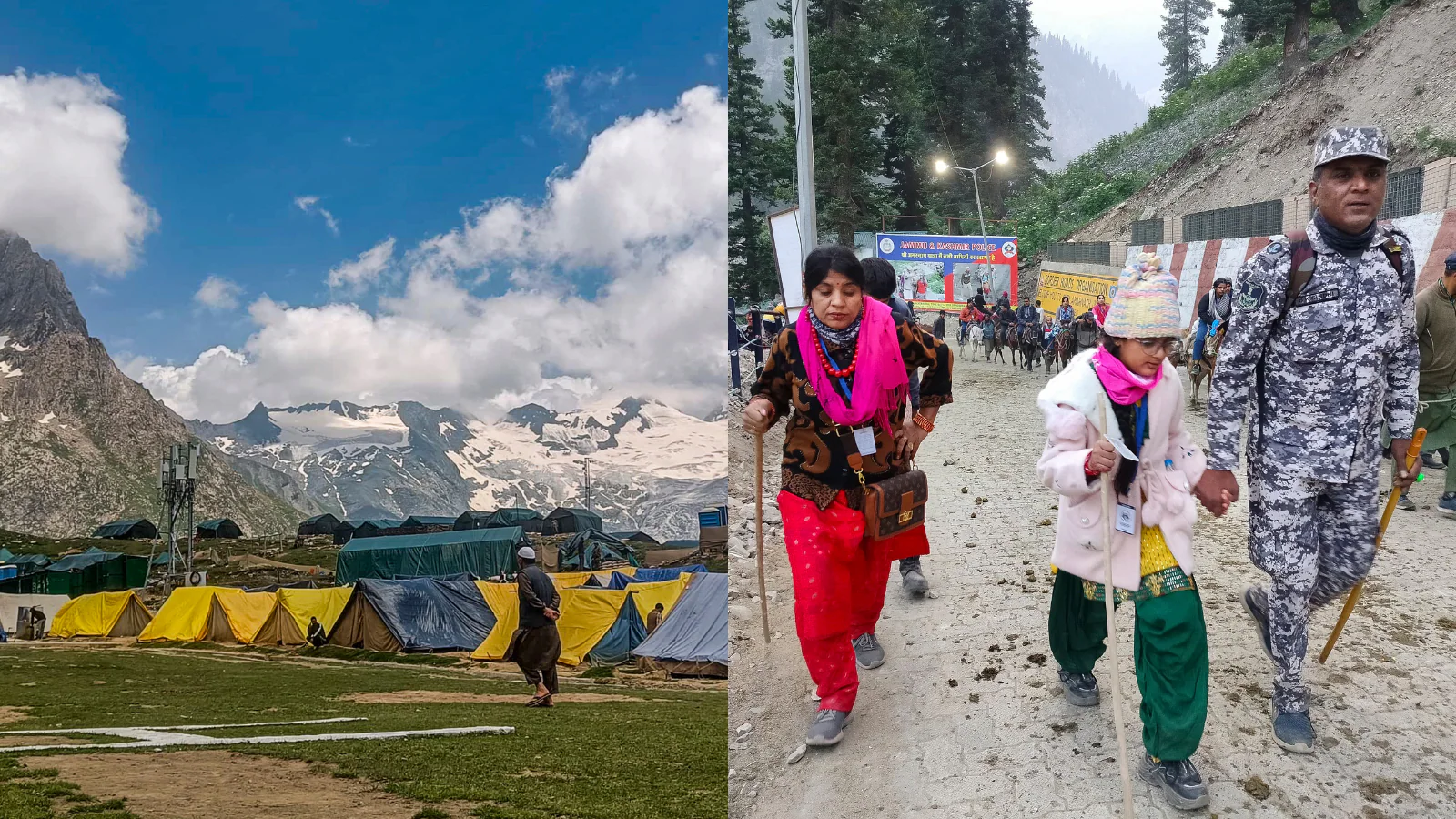By Dr Shahid Iqbal News18
On July 3, 2025, the majestic Himalayan routes of Jammu & Kashmir once again echoed with chants as pilgrims from across India and abroad set forth on the sacred Shri Amarnathji Yatra—a spiritual journey to the ice-lingam of Lord Shiva in the Amarnath cave shrine. This yatra is not merely a religious event; it is a celebration of India’s pluralistic soul, a demonstration of the secular integrity of our civil services, and a lifeline for local economies in the remote mountain belts of Kashmir. In recent years, the integration of technology and principles of sustainability has tremendously enhanced the pilgrim experience—ensuring both improved service delivery and the preservation of local environmental values, besides improving the sense of security.
I have had the privilege—thrice in the last four years—of serving as Nodal Officer for this monumental pilgrimage. As a Muslim civil servant entrusted with coordinating one of the most significant Hindu pilgrimages in the world, I find in this experience a living embodiment of what India truly stands for: religious harmony, cultural respect, and shared national responsibility.
A Pilgrimage of Ancient Roots
The Amarnath Yatra has deep roots in Indian religious tradition. Ancient texts and local lore trace references to the Amarnath cave—situated at an altitude of 3,888 meters—to thousands of years ago. According to legend, Lord Shiva revealed the secret of immortality (“Amar Katha”) to Goddess Parvati at this very site. Over time, devout sages and pilgrims began traversing the arduous Himalayan trails during the Shravan month (July–August), forming a tradition that continues with undiminished spirit.
Modern documentation from the 19th century shows that local Muslim families, particularly from Pahalgam and Baltal regions, traditionally facilitated this yatra by serving as guides and porters. That tradition of interfaith cooperation remains alive and visible even today.
Civil Services Beyond Religion
When I am asked what it feels like, as a Muslim, to serve as the nodal authority for a Hindu yatra, my response is simple: The civil service is not a religious institution—it is a public trust. Our role is to serve the people, uphold the Constitution, and facilitate the diverse spiritual journeys that form India’s vibrant culture. However, in global comparison, it is hard to find parallels where a person from a different religion leads such a major pilgrimage. This is a unique Indian reality that we must cherish and uphold.
A Reflection of Pluralism
One of the most defining moments of my career came in July 2022, when a tragic cloudburst near the holy cave claimed lives and left many injured. That unfortunate incident coincided with Eid-ul-Adha eve, yet the response from the local community was one of overwhelming solidarity. Thousands of Muslim service providers, ponywallahs, porters, and volunteers—many fasting or offering Eid prayers at the base camps– joined the relief and restoration efforts.
The Lieutenant Governor of J&K visited the area the same day, and the image of Muslims offering Eid prayers amidst a Hindu pilgrimage site, followed by collective relief efforts, stood out as a symbol of India’s spiritual resilience and unity.
Economic Lifeline for Mountain Communities
The yatra is also a critical economic engine for tens of thousands of locals across South Kashmir and the Sonamarg region, both areas attracting the workers from entire Jammu and Kashmir. From tent providers, pony owners, palki bearers, taxi operators, to local shopkeepers and artisans, the pilgrimage sustains livelihoods and injects vitality into the regional economy.
In 2024, over 4.5 lakh pilgrims participated, contributing to a seasonal economy that exceeds ₹500 crore at conservative estimates. The 2025 Yatra is expected to see greater experience for pilgrims due to the improved infrastructure, better security coordination, and enhanced services.
Infrastructure, Civil Amenities & Technological Integration
The Shri Amarnathji Shrine Board (SASB), in coordination with various development and welfare departments, local administration and security agencies, has introduced landmark interventions over the years to ease the journey, which include Real-time tracking and registration via RFID, improved base camps at Baltal and Nunwan with sanitation, food, and healthcare facilities, 24×7 medical units, oxygen booths, and disaster response teams along the route. Digital services, feedback and grievance redressal portals, multiple helplines, and information kiosks have tremendously eased the pilgrimage experience. The SASB has prioritized robust waste management and eco-friendly initiatives to safeguard the fragile Himalayan environment, striving for a zero-landfill approach through scientific waste collection and sustainable disposal practices. All of this reflects not only administrative foresight but also a commitment to dignity and comfort for every pilgrim.
A Call to the Nation
The Shri Amarnathji Yatra is more than a spiritual trek—it is an experience that binds the nation. It represents the unshakable faith of the devotee, the strength of our secular institutions, the hospitality of the local people, and the power of coordinated governance.
As we welcome the 2025 Yatra, I urge fellow citizens from every corner of India to consider embarking on this profound journey—not just for its religious merit, but to witness the divine confluence of faith and fraternity that makes this land so unique. Let the echoes of the Himalayas this July remind us all: in unity, service, and reverence, India thrives.
Views expressed in the above piece are personal and solely those of the author. They do not necessarily reflect News18’s views.
